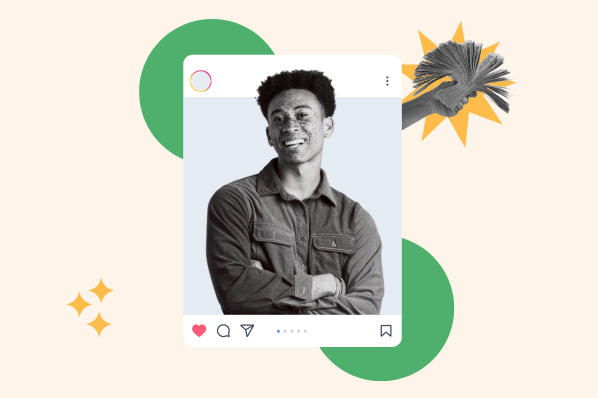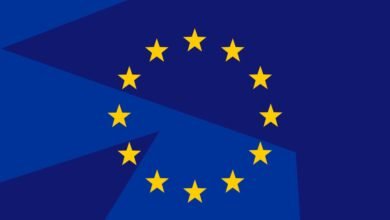How to Get Sponsored on Instagram: What 500+ Marketers Want

▼ Summary
– Sponsored Instagram posts include both promoted ads created by brands and paid sponsorships where influencers create content for brands.
– To attract brand deals, influencers should define their niche, understand their audience demographics, and maintain consistent, high-quality content.
– Optimizing an Instagram profile with a professional account, clear bio, and strategic hashtags increases discoverability by brands.
– Building a media kit and proactively pitching to aligned brands are effective strategies for securing sponsorships.
– Disclosing paid partnerships using #ad, #sponsored, or Instagram’s paid partnership label is legally required and maintains authenticity.
Landing Instagram sponsorships isn’t just about follower counts, it’s about building a compelling brand, understanding your audience, and knowing how to pitch effectively. Many successful influencers operate in the micro to mid-tier range, proving that engagement and niche alignment often matter more than raw numbers. Whether you’re just starting out or looking to scale your partnerships, a strategic approach can open doors to meaningful collaborations.
There are two primary ways brands promote on Instagram: paid promoted posts and influencer sponsorships. Promoted posts are ads created and managed by brands through Instagram’s ad platform, targeting users based on demographics and interests. These appear in feeds and Stories with a “Sponsored” label. In contrast, influencer sponsorships involve a brand partnering directly with a creator to feature products in an organic, native way, often marked with #ad or a “Paid Partnership” tag.
To start attracting sponsors, define your personal brand clearly. Your niche, whether it’s fashion, food, parenting, or comedy, should be evident in every post. Consistency in style, tone, and messaging helps brands immediately grasp what you represent. A cohesive aesthetic and regular posting schedule signal professionalism and reliability.
Understanding your audience is equally critical. Brands want to know who they’ll reach through you. Use Instagram Insights to learn about your followers’ age, location, gender, and active hours. Being able to say, “My audience consists primarily of women aged 25–34 in urban areas who engage most with recipe Reels in the early evening,” is far more persuasive than vague generalizations.
Post consistently, but prioritize quality over quantity. Aim for three to five well-crafted posts per week, mixing Reels, carousels, and static images. Stories can be posted more frequently, around two per day, to maintain presence without overwhelming your audience. Timing matters; weekdays around lunch and evenings often see higher engagement, but always refer to your own analytics for the best results.
Optimize your profile to make a strong first impression. Switch to a professional creator account, select a relevant category, and craft a bio that summarizes who you are and what you offer. Include location, niche, contact details, and a Linktree or similar tool to direct visitors to your other platforms or portfolio. Use Story Highlights to showcase past collaborations, rates, or partnership guidelines.
Hashtags and geotags boost discoverability. Use a mix of broad and niche-specific hashtags, around seven per post, to avoid appearing spammy. Location tags help local brands find you. Avoid banned hashtags by checking their status in Instagram’s search bar before using them.
Start tagging brands in your posts, especially smaller ones aligned with your content. This builds awareness and can lead to organic partnerships. Engage with brands you admire by commenting meaningfully on their posts, this puts you on their radar.
A media kit is essential for formal outreach. Include your niche description, audience demographics, engagement metrics, examples of top-performing content, and services offered. Tools like Canva or HubSpot offer templates to create polished, professional kits quickly.
Don’t wait for brands to find you, pitch them directly. Research companies that align with your values and audience, then send a personalized DM or email introducing yourself and explaining why a partnership would benefit them. Include your media kit and be prepared to negotiate terms.
Know your worth when discussing compensation. Rates vary based on follower count and engagement, but even nano-influencers can charge several hundred dollars per post. Consider offering package deals, like a feed post plus Stories, to increase value.
Leverage Instagram’s Creator Marketplace to connect with brands more efficiently. Ensure your account meets eligibility requirements, optimize your profile with relevant keywords, and use the portfolio feature to showcase your work. Monitor your Partnership Messaging inbox for incoming opportunities and browse open projects to express interest.
Always disclose partnerships using #ad, #sponsored, or Instagram’s built-in paid partnership labels. This isn’t just ethical, it’s legally required in many regions. Transparency builds trust with your audience and protects you from potential compliance issues.
Before accepting any deal, evaluate brand alignment. Ask yourself if the partnership feels authentic to your content and valuable to your followers. Review contract terms carefully, especially regarding content usage rights and payment schedules. Ensure you retain enough creative freedom to maintain your authentic voice.
Sponsored collaborations offer significant benefits, including increased credibility, broader reach, and monetization opportunities. However, they also come with risks like loss of authenticity or potential reputational damage if the brand isn’t a good fit. Choose partnerships wisely and always prioritize your relationship with your audience.
Success in influencer marketing requires patience and persistence. Stay true to your voice, keep your audience’s interests at heart, and continue refining your strategy. With the right approach, Instagram sponsorships can become a sustainable and rewarding part of your content journey.
(Source: HubSpot Marketing Blog)





